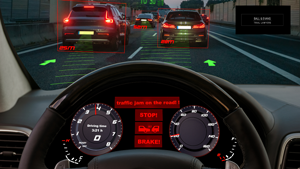According to estimates from the National Safety Council (NSC), 38,800 people lost their lives in car accidents in 2019, which was 2% fewer than in 2018 and 4% fewer than in 2017. In addition, 4.4. million people had to go to the hospital after a car crash. This, California residents should know, also represents a 2% decline from the prior year. The NSC did not speculate on the reason, but several factors have, no doubt, contributed to this trend.
The impact of driver assistance features

Vehicles have long provided drivers with the option to engage certain safety features that comprise advanced driver-assistance systems (ADAS). These features include collision warning, lane departure warning and automatic emergency braking, and they have been proven to either prevent accidents or mitigate the force of impact in those that do occur. Hence, one may partially thank ADAS for the decrease.
Citywide traffic improvement plans
While a 2% decline may not sound like much, the reality is that things may be improving in ways that are not as discernible right now. Ten cities, for example, have adopted a Vision Zero model of traffic safety improvement, which means that they are aiming for a future of zero traffic deaths and zero serious injuries. High-crash areas are being redesigned, and other measures are sure to be implemented. Individual drivers, though, must remember to stay safe themselves to avoid becoming statistics.
Legal representation for accident victims
Victims of motor vehicle accidents often have good grounds for a personal injury claim. It all depends on the degree of the other driver’s fault. You may learn how strong of a case you have and how much you can seek in compensation by consulting with an attorney. A lawyer may help bring together evidence of the defendant’s negligence by hiring crash investigators and other third parties. He or she may also handle negotiations.


